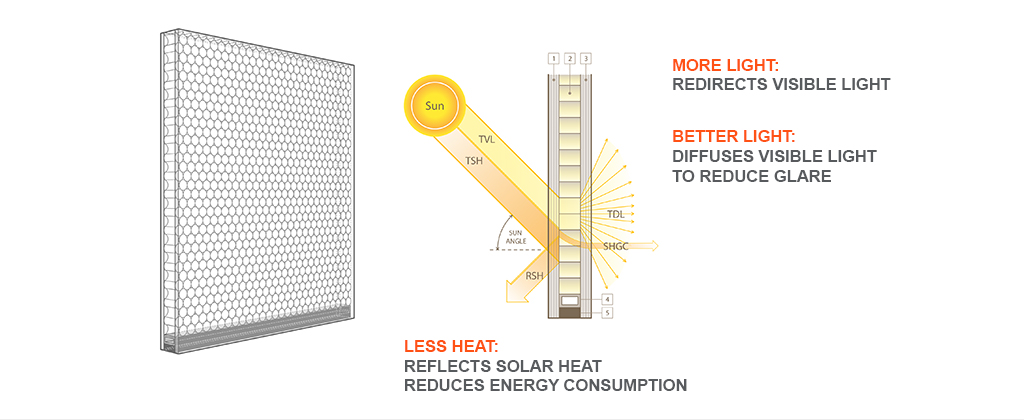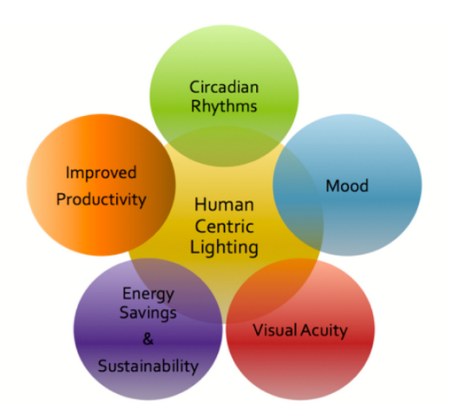
In last month’s blog post, I kicked off a series of about glass in lighting by providing a brief history and mentioned possible ways in which glass could effectively be used to increase lighting performance. In particular, how it can be modified through glass chemistries (low iron), applied coatings (anti-reflective, conductive, etc.) and surface treatments (acid-etching, patterning, etc.) to optimize optical performance. In this blog post, I want to continue the series by reviewing and discussing each of these areas in more detail to provide a more comprehensive understanding on how glass can be wisely used to optimize lighting efficiency in lighting applications.
The first major challenge of using glass as a material in lighting is with its inherent material properties. Glass, as a material, loses 9 to 10 percent of lighting efficiency through reflection and absorption losses as shown in the graphic below.
Diagram courtesy of Guardian Industries
As you can see, 4 percent of light is lost through reflecting off of the first surface, another 2 percent lost through absorption from the FeOx content (0.11 to 0.08 percent) in standard soda lime glass chemistry, and still another 4 percent lost through reflecting off of the second surface. In today’s world of high-efficiency and high-efficacy luminaire requirements, this is an unacceptable sacrifice and has unfortunately caused glass to be designed out of many lighting fixtures. However, there are innovative and readily available ways to address this problem with glass and reduce reflection and absorption losses and increase overall light transmission and efficiency. These include using:
- Low Iron Soda Lime Glass;
- Anti-Reflective (AR) Coatings; and
- Surface Treatments and Textures.
The use of low iron soda lime glass attacks the 1 to 2 percent absorption losses mentioned above by reducing the FeOx content of the glass chemistry down to 0.2 to 0.3 percent and all but eliminates absorption losses. The spectral graph below compares the transmission curves at NADIR (0 degree incident angle) of standard soda lime glass and low iron glass with special attention given to the visible range where luminaires perform in:
Diagram courtesy of Guardian Industries
You can clearly see a boost of 1 to 2 percent of light transmission gained just from the replacement of the substrate material itself with low iron glass. However, that still leaves 8 percent of lost light transmission due to reflectance losses to recover to gain optimum luminaire efficiency. How can that be undone?
Anti-Reflective (AR) coatings can be effectively used to reduce reflection losses and increase light transmission in lighting as well as many other commercial applications. In fact, they are already commonly used in eyeglasses, picture frames, and photovoltaics. The principle of AR coatings is to minimize the interference of light traveling through a given material’s surface versus that of its immediate surrounding environment (in this case, air). Therefore, the goal of an AR coating with a glass lens in lighting is to create this interference layer with a refractive index (n) as close as possible to air (n = 1) and the glass surface (n = 1.52) to filter the reflection losses and bridge that optical gap.
Adding a 3-layer AR coating (medium, high, and low index gradient) to a low iron substrate, mentioned above, allows most of the 8 percent reflection losses to be recovered in light transmission and efficiency. The spectral graph below compares the transmission curves at NADIR (0 degree incident angle) of standard soda lime glass and low iron glass as well as application of an AR coating on one (singled sided or SS AR) and both (double sided or DS AR) sides of the low iron glass (again with special attention given to the visible range where luminaires perform in):
Diagram courtesy of Guardian Industries
A reduction of reflection losses from 4 percent down to 0.5 percent per surface can clearly be seen and allows a Low Iron substrate with Double-Sided Anti-Reflective coatings to reach 99 percent light transmission (efficiency) in the visible range. The absorption and refection losses seen earlier with using standard soda lime glass have been all but removed at the 0 degree incident angle.
But what about angular losses in light transmission? Since most LED-based luminaires are dispersing light in very aggressive light distribution patterns there is limited value in maximizing light transmission at a 0 degree incident angle only.
The combination of Low Iron glass and AR coatings also help with the reduction of angular losses as shown in the material output files from LTI Optics of standard soda lime glass, low iron glass, and Single-Sided and Double-Sided AR coatings on low iron glass:
Diagram courtesy of Guardian Industries
Where: τ = Transmission, α = Absorption, and ρ = Reflection
As these plots show, the average light transmission achieved with standard soda lime glass from 0 to 75 degree incident angles is only 86 percent whereas low iron reaches 88 percent, SS AR on low iron 90 percent, and DS AR 94 percent and holds > 90 percent light transmission up to 55 degrees (when standard glass only reaches that at 0 degrees). Clearly, the combination of low iron glass and AR coatings help reduce angular light losses as well.
Finally, another method of reducing reflection losses with glass is by modifying its surface texture. There are two commercially ready methods of doing this:
- Acid-etching the surface to make the glass “frosted” or “diffuse”; and
- Texturing (or patterning) the surface while the glass is still in its molten form.
Comparing standard clear glass (as a reference) to various acid-etched and textured products combinations (with and without an AR coating), you can clearly see benefits of modifying the glass surface to increase your light capture over angle with all cases providing superior performance versus standard soda lime glass:
Chart courtesy of Guardian Industries
In summary, glass indeed has some inherent challenges for effective use in the high-performance and energy-efficient LED luminaires of today. However, with the use of innovative glass chemistries (low iron), coatings (AR), and surface modifications (acid-etch, texturing) these challenges can not only be removed but also allow for even higher levels of efficiency and efficacy to be achieved.
In my next post, I will provide some case study examples of effectively using these innovative uses of glass lenses, which provide both performance and economic (ROI, TCO, etc.) benefits in selected applications.



